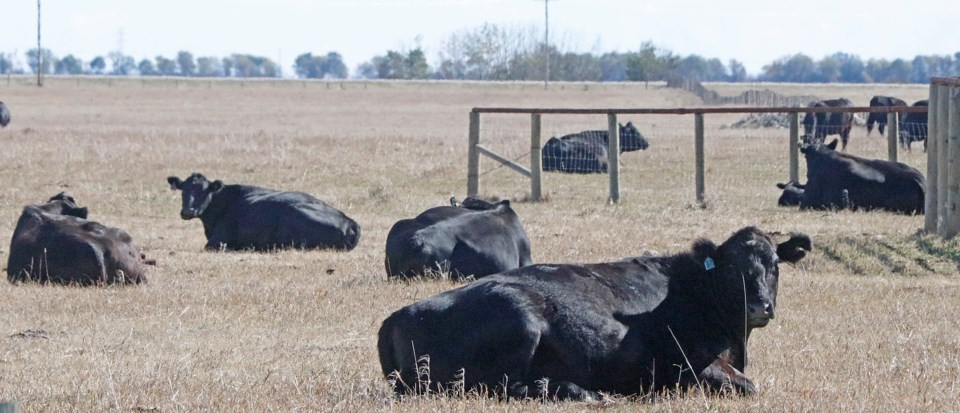Along with celebrating 150 years of Canadian Confederation this year, farm producers are also marking 150 years of the agriculture industry in Canada. Saskatchewan has been the breadbasket of the world for over a century. It’s still an exporting province of crops and livestock that the world has come to rely. With each generation farms and ranches become more efficient.
Ranching and cattle production has been an important industry in southern Saskatchewan for over a century. Saskatchewan Cattleman’s Association Chief Executive Office Ryder Lee spoke to the Assiniboia Times about the key issues in beef production and new developments in the industry.
Lee knows ranching well in southern Saskatchewan. He grew up on a ranch near Fir Mountain providing him with a personal connection to the industry while he worked for the Canadian Cattlemen’s Association in Ottawa for over a decade. There, he focused on animal care and domestic agriculture policy. He was also a driving force behind the renewal process of the Canadian Code of Practice for the Care and Handling of Beef Cattle. He has returned to the province recently to head the Saskatchewan Cattleman’s Association.
“Cattle play a huge role in all parts of Canada,” Lee stated. The beef industry has been criticized by environmental and consumer groups, but Lee explained the benefits of these grazers. “They turn agriculture land into high quality nutritious beef,” he said. He noted that there is a lot of land left unused by agriculture such as the hilly lands, as in the province’s south, and cattle can graze this land to produce healthy protein.
From the environmental perspective, he explained that plant and wildlife habitats would suffer without cattle grazing, especially species at risk, because grasses need to be grazed down for their health. Lee maintains that cattlemen have always been conservation-minded. They work with environmental groups like Ducks Unlimited and conservation organizations. One of the key aspects of ranching is managing grazing. Grazing renews grasses that species at risk nest in. It also renews the soil to slow down water movement, and sequesters carbon on grasslands. “We can see the value that cattle have on the land,” he added.
Lee also points out the social aspect of ranch life. “Ranching is the heart of communities. It’s what keeps the rinks open and the churches full,” he said. At the same time, he noted a continuing demographic trend in ranching towards a shrinking of the farming population and those involved in ranching. Farms have become consolidated with fewer people working more acres. But a declining farming population also has an impact on small towns making less of a demand on its services and businesses.
This smaller group of producers have been aided by improvements in equipment. And larger tools mean that one producer becomes more efficient with the same tools.
Technologies have changed over time. For example, the round baler, which can be operated by one person, has made a huge change to haying. At one time, the haying season lasted from spring through to the first snow of winter. Square bales were also labour intensive and took labour time away from other tasks. But the round baler changed all that. Cattle management practices have also changed like shifting calving times to later in spring.
Another big change in cattle production is in genetics and breeding. There are more cattle breeds seen on farms these days. “Your cattle have to be adapted to your farm,” Lee said.




